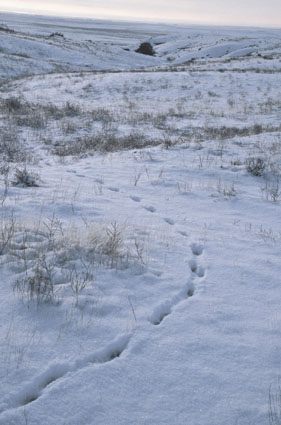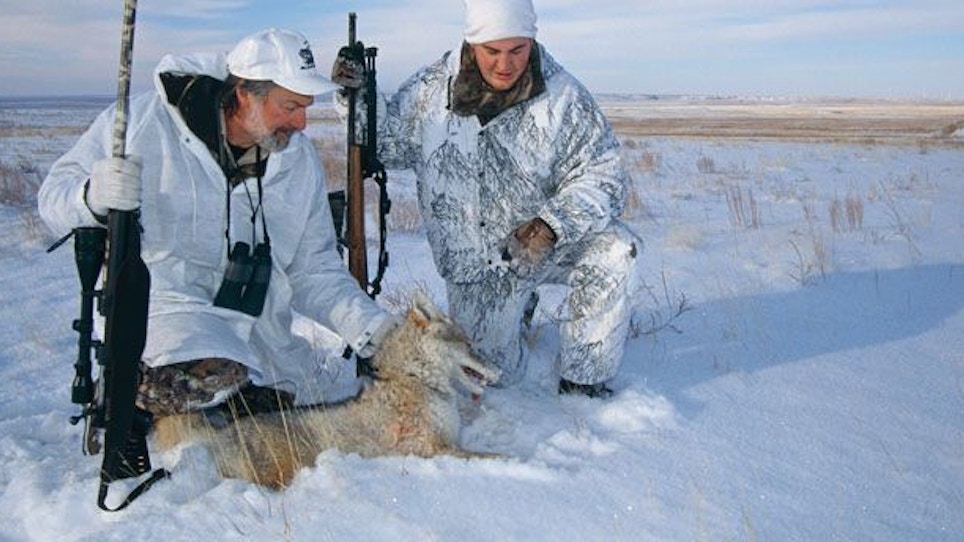 Windy Day Calling Technique
Windy Day Calling Technique
On a calm day, after I call at a stand, I generally walk back to the pickup and move a couple of miles to a new destination. Not so on a windy day. On a calm day, it is generally agreed that a standard mouth call can be heard at least a mile away by a coyote. Depending on the intensity of the wind, this distance is easily cut in half and I have hunted on days where 300 yards was probably the maximum a call could be heard.
On windy days I call much more frequently than I do on calm days. If you have ever sat apart from a calling partner when the wind is gusting, you know you can only expect to hear about every third call, due to the gusting of the wind. If the caller happens to be blowing when there is a lull between gusts, it can be heard. If he calls during the middle of gust, chances are it won't. For this reason I call almost constantly when the wind is blowing.
Picking the Right Predator Call
In windy situations you need a call that will carry. I prefer calls with bodies made either of acrylic or aluminum, with either multiple closed reeds or large open reeds for maximum volume. In addition to loud, standard-sized calls, I have also used large open-reed howlers blown like a jackrabbit-in-distress call with good success.
I also like high-quality electronic calls, as they can produce loud volume when needs require. Keep in mind, not all electronic calls are loud, but digital units with large, high-quality speakers designed for long-range work do very well at cutting through howling wind.
Hunt Sheltered Areas in High Wind
Coyotes often hole up on windy days, riding out the storm. While calling is effective in these tight areas, sometimes there is no good approach to make a stand, or the wind is blowing too hard to be heard, even up close and personal.
Two hunters can generally cover a single draw very effectively. Start at the widest point and walk toward the end. As in pheasant hunting, the objective is to flush coyotes from the thick cover.
Spot and Stalk in High Winds
When the coyotes have cover they will use it, and most of the time become invisible from a distance. But in sparse, open country "heavy" cover often means the lee sides of open hills, blown out cut banks, hay bales and small clumps of sage or yucca bushes.
Wait until mid-morning, then go to the tallest point around and take a high-powered spotting scope. By this time almost all coyotes have laid up for the day and by sitting and examining every likely out-of-the-wind hiding spot. After one is spotted, stalk it as you would stalk any other game.
Rifle Choice for High Winds
The biggest problem in the wind is bullet drift and this can be reduced (never eliminated) by heavier bullets (the design of the bullet also plays a part, but the most significant factor is weight). For windy-day rifles I start with .243 and go up to about .270 caliber.
I like low-powered variable scopes, since many times you are calling in close quarters or trying to pick up a running target.
Ammo tips (from the editor):
For a heavier rifle bullet, check out:
Hornady's Superformance Varmint ammo for the .243. >> CLICK HERE <<
Winchester's Pointed Soft Point ammo for the .243 and .30-06. >> CLICK HERE <<






